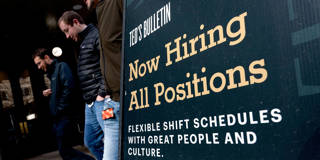The US Federal Reserve tried hope as a macroeconomic strategy last year and ended up contributing to today’s rapid inflation. Now that it has accepted the need for monetary-policy tightening, it must stay the course until inflation is no longer fueling wage growth and feeding back into further increases in the price level.
CAMBRIDGE – Recent price- and wage-growth data make it increasingly clear that the US economy’s underlying inflation rate is at least 4% and more likely to be rising than falling. Although the Federal Reserve has acted forcefully in recent months to contain inflation, unfortunately it will need to stick to its plan of rapid interest-rate hikes until there is clear evidence that underlying inflation is slowing dramatically. That is especially difficult when the economy is already slowing, but the alternative of deferring action while inflation becomes more entrenched would be much worse.

CAMBRIDGE – Recent price- and wage-growth data make it increasingly clear that the US economy’s underlying inflation rate is at least 4% and more likely to be rising than falling. Although the Federal Reserve has acted forcefully in recent months to contain inflation, unfortunately it will need to stick to its plan of rapid interest-rate hikes until there is clear evidence that underlying inflation is slowing dramatically. That is especially difficult when the economy is already slowing, but the alternative of deferring action while inflation becomes more entrenched would be much worse.